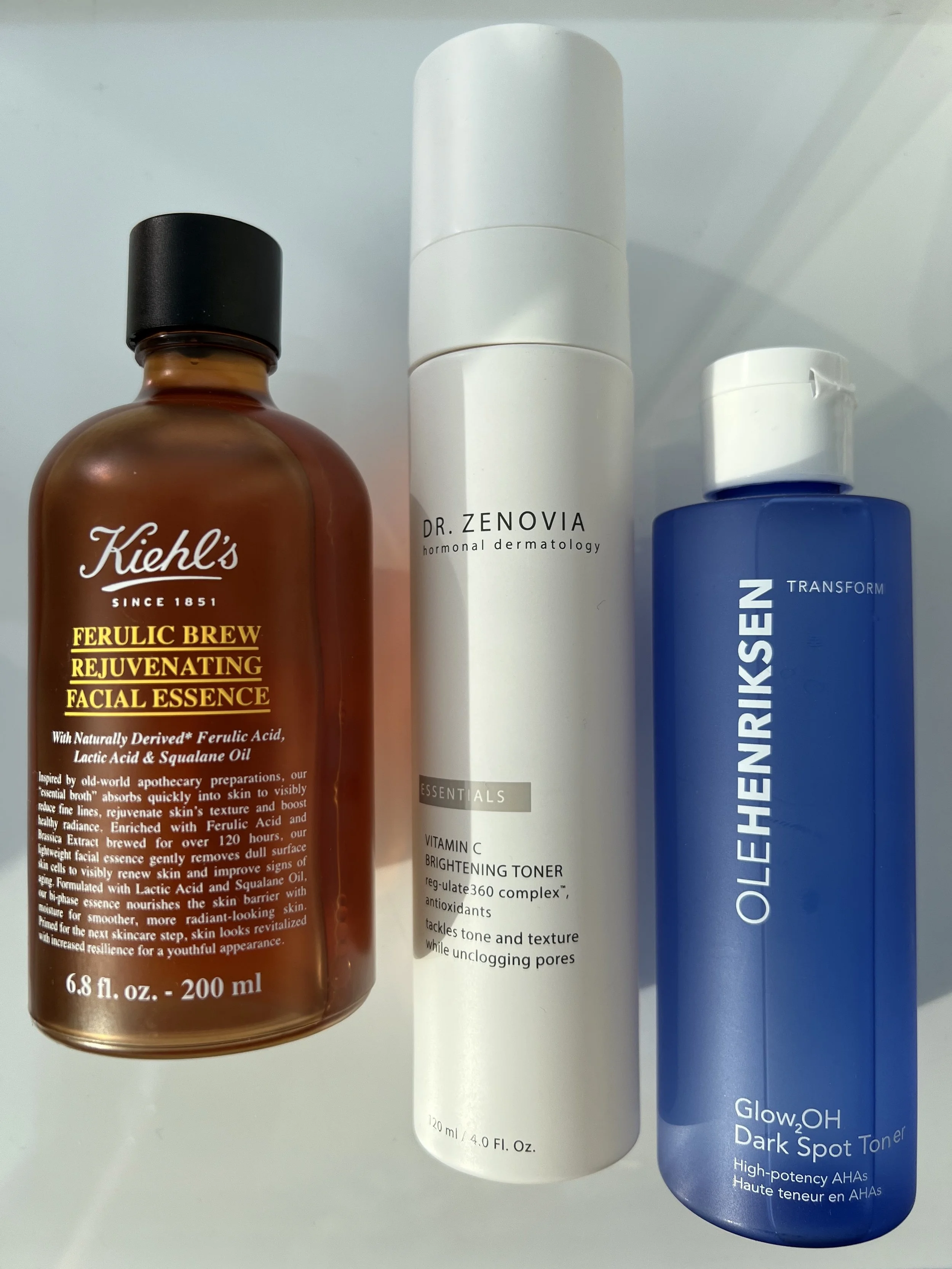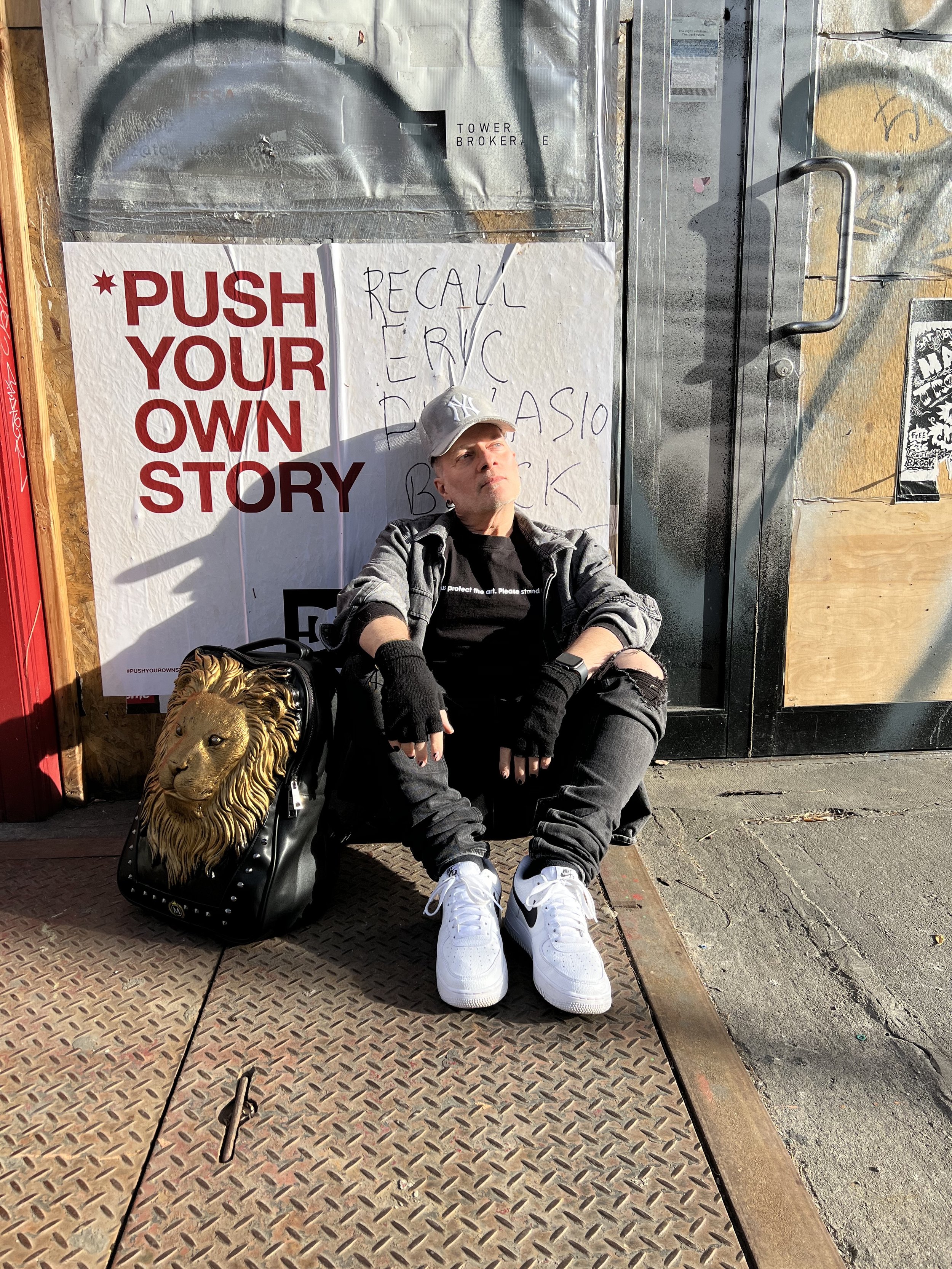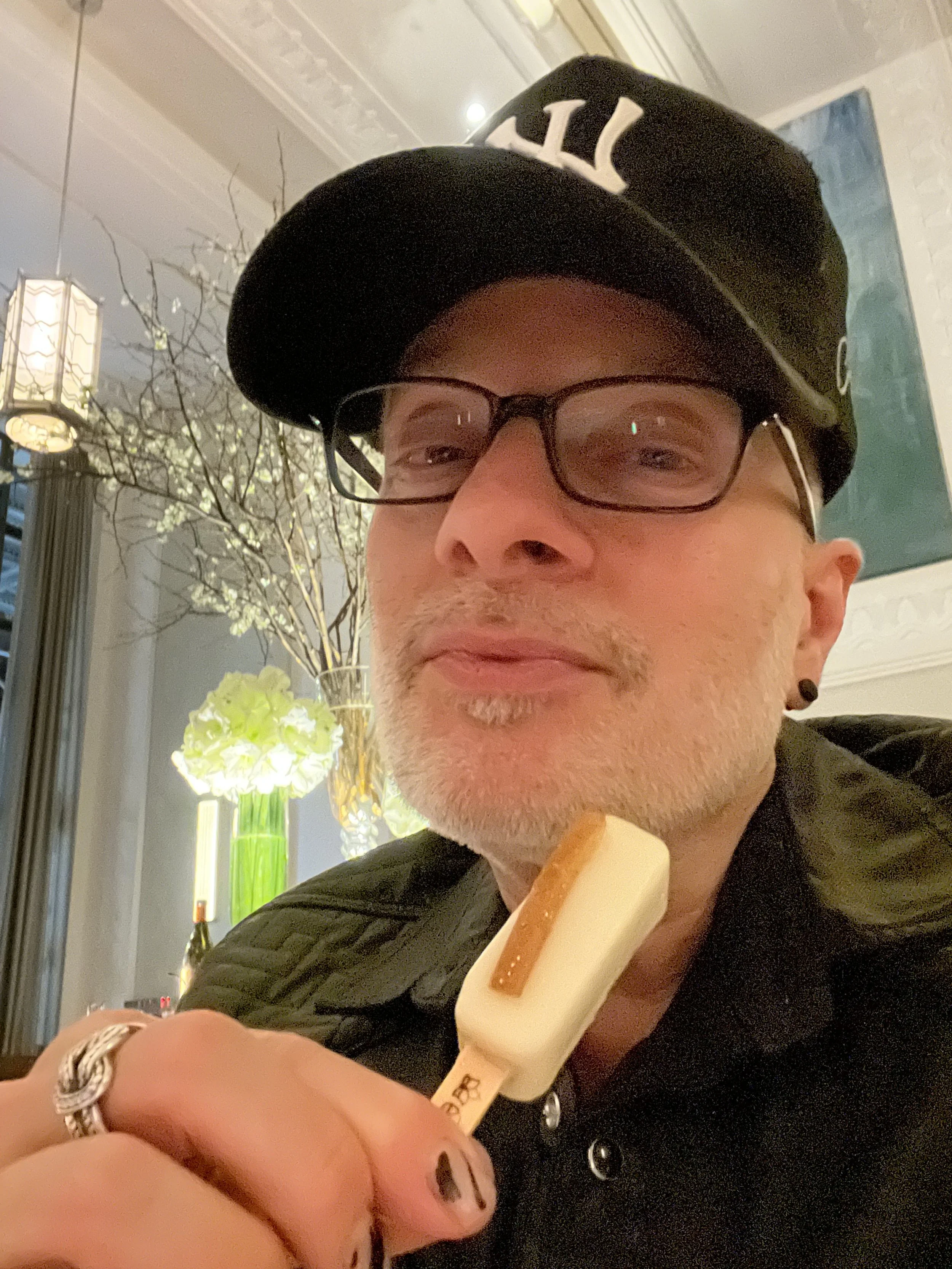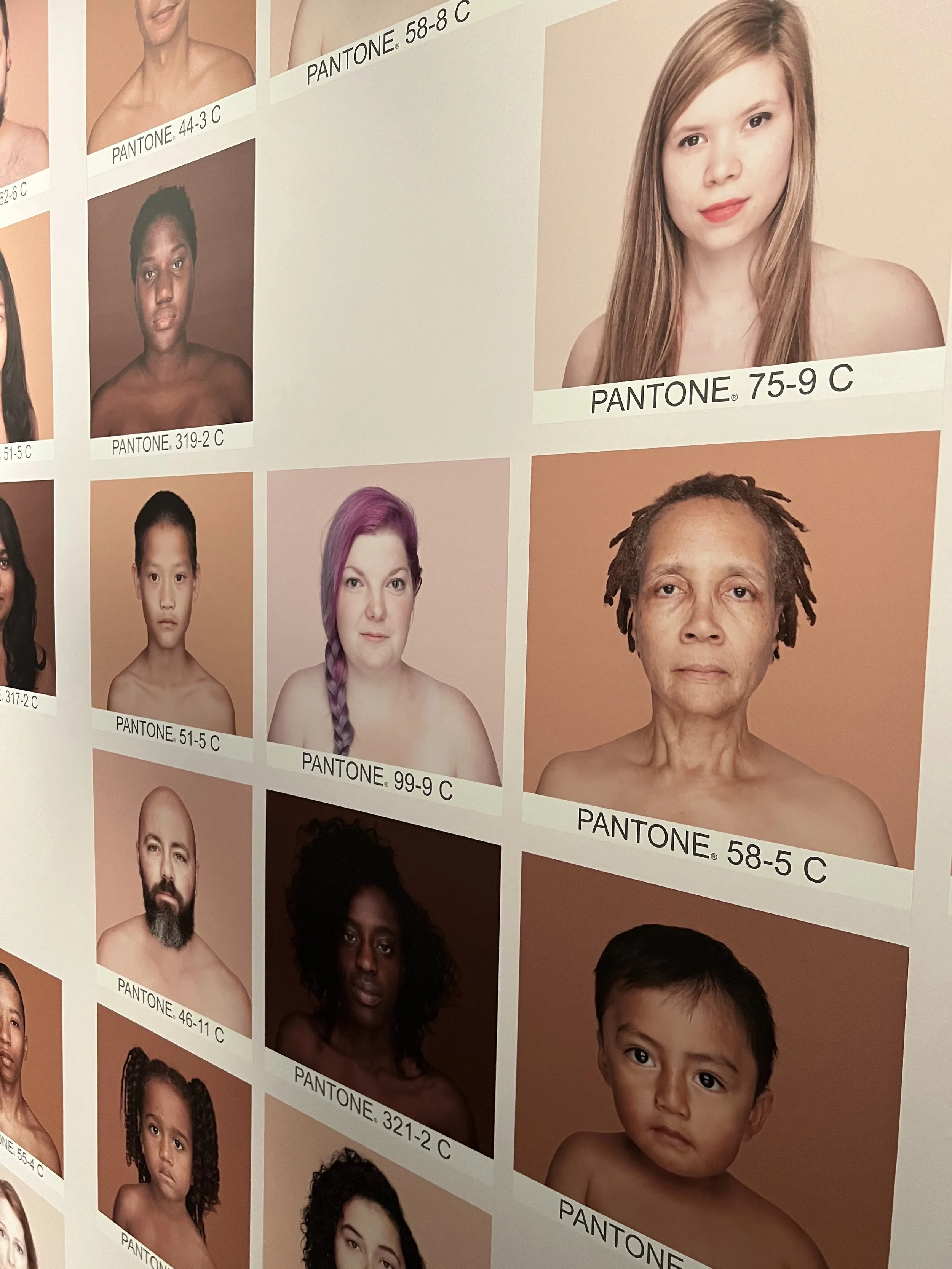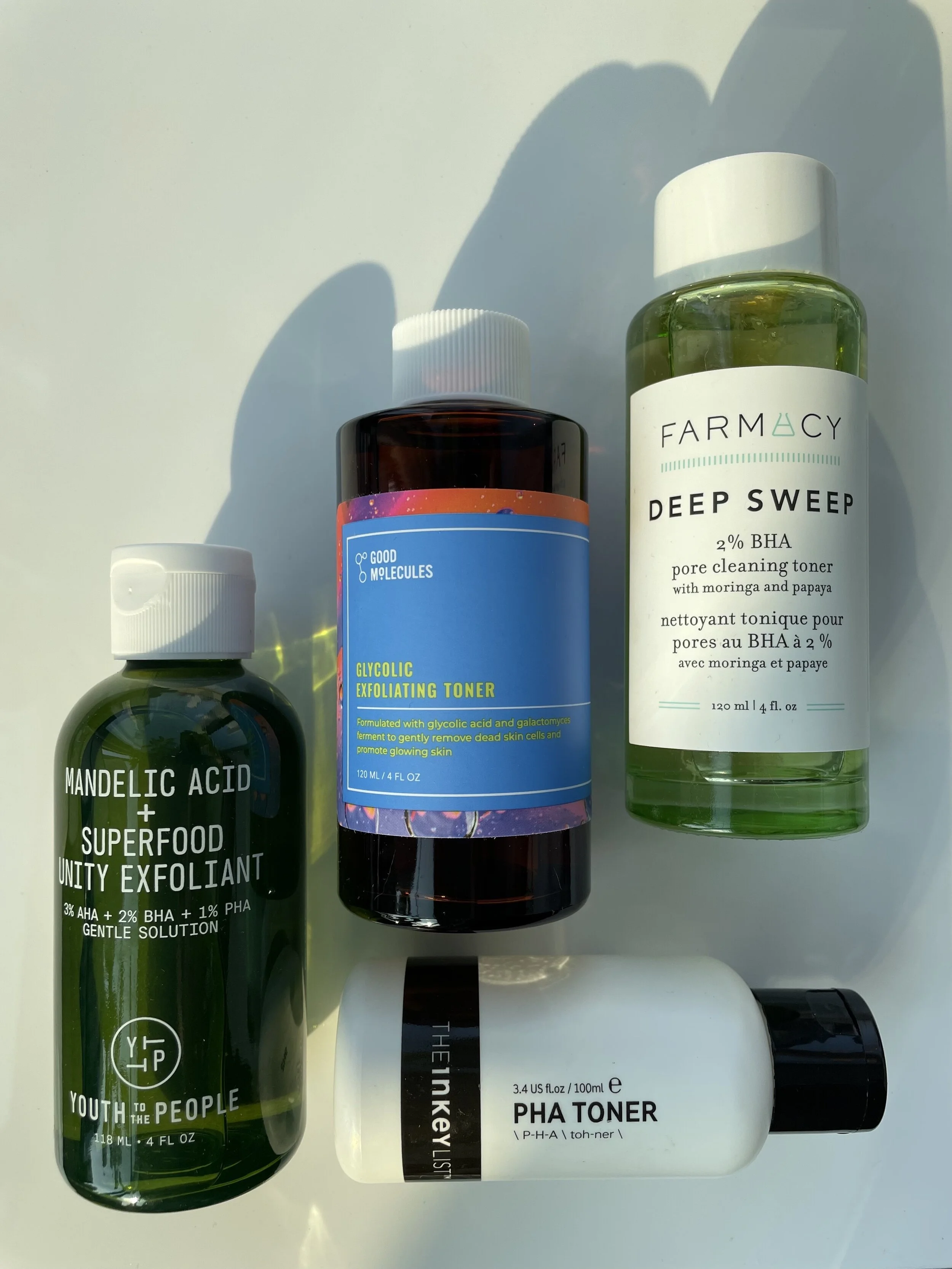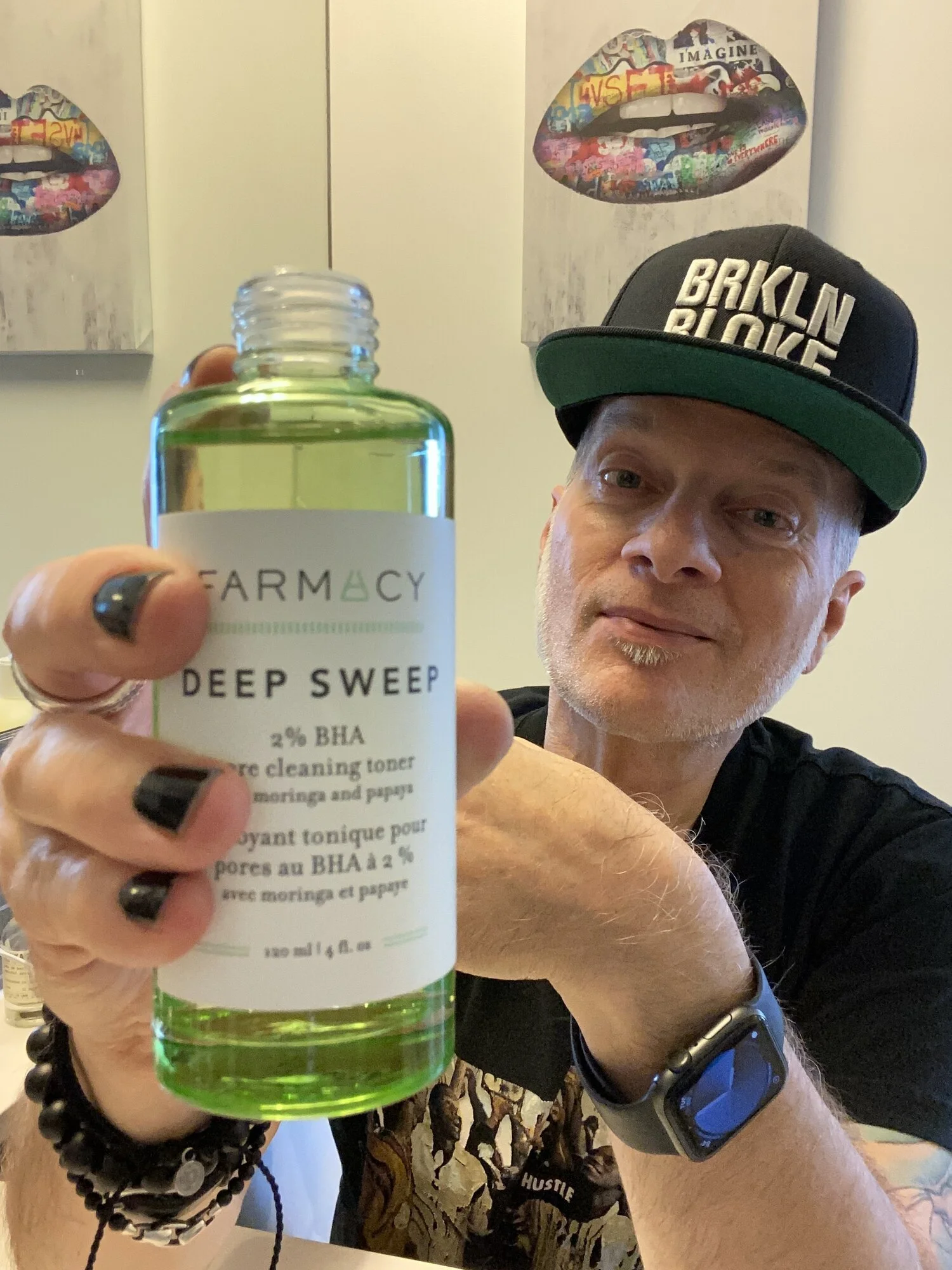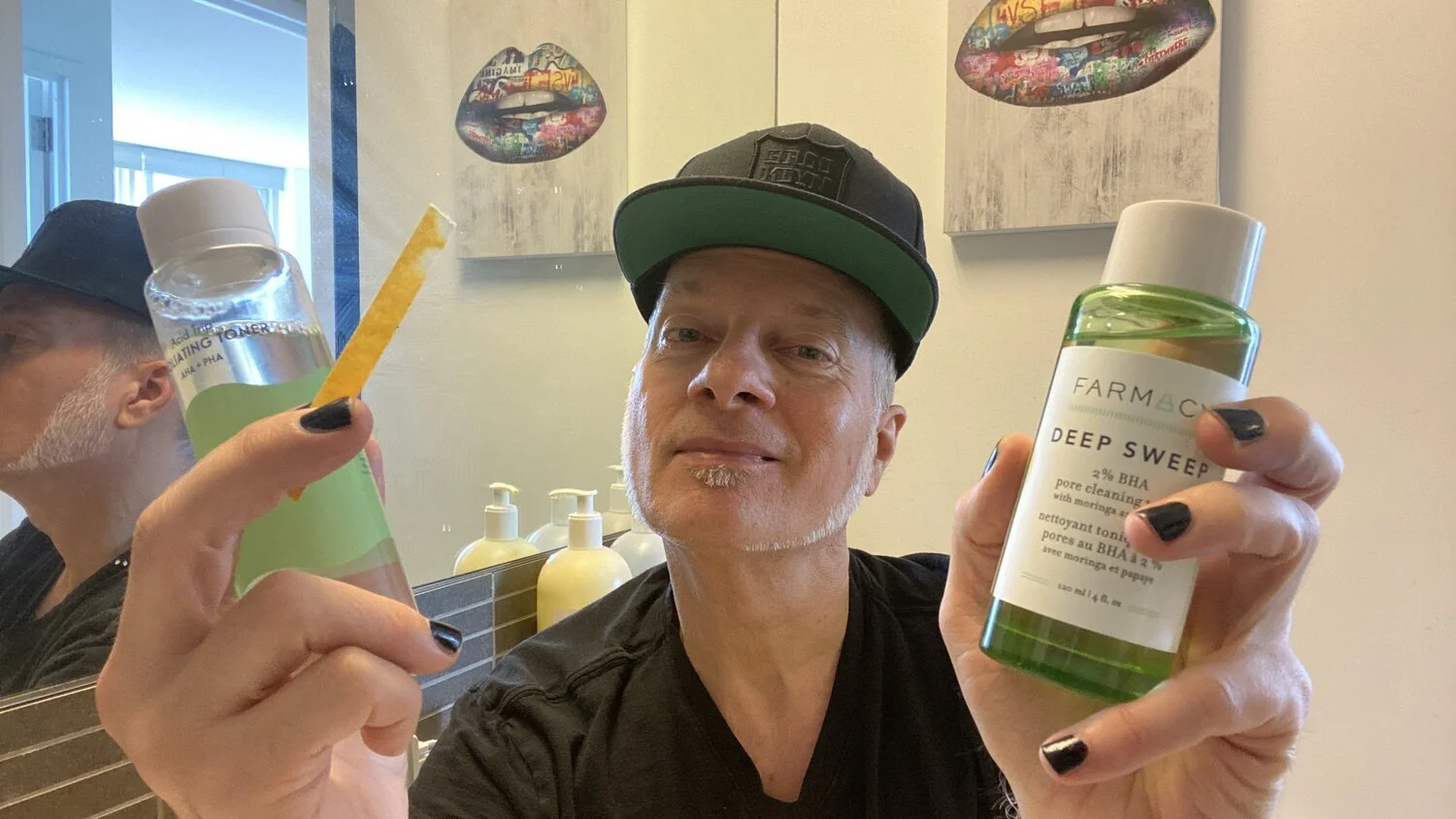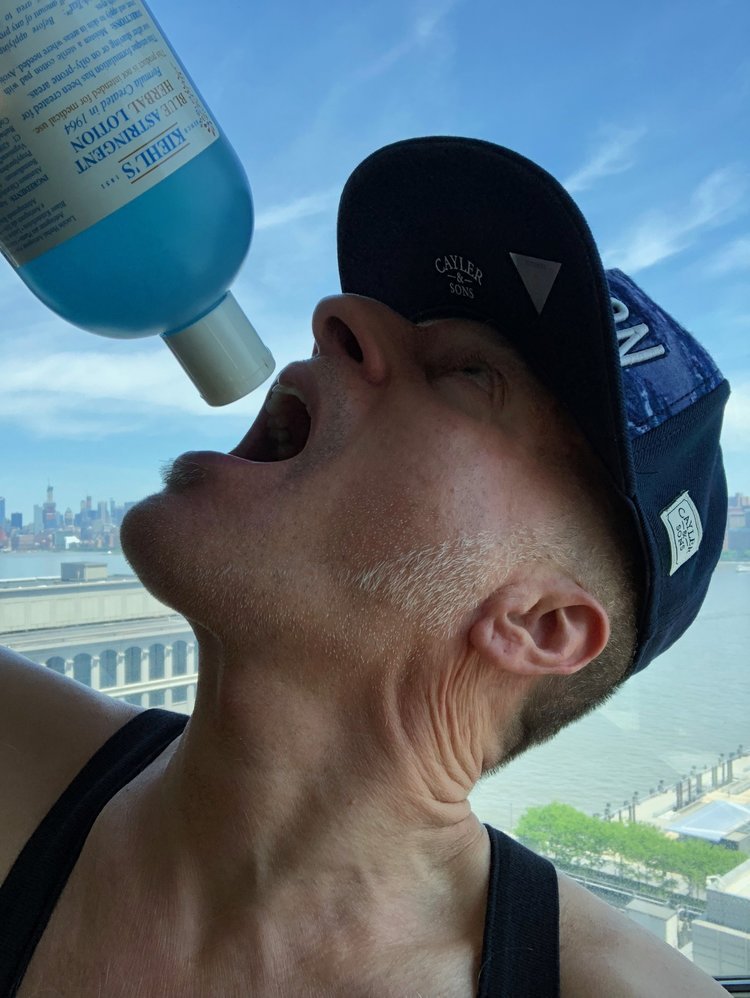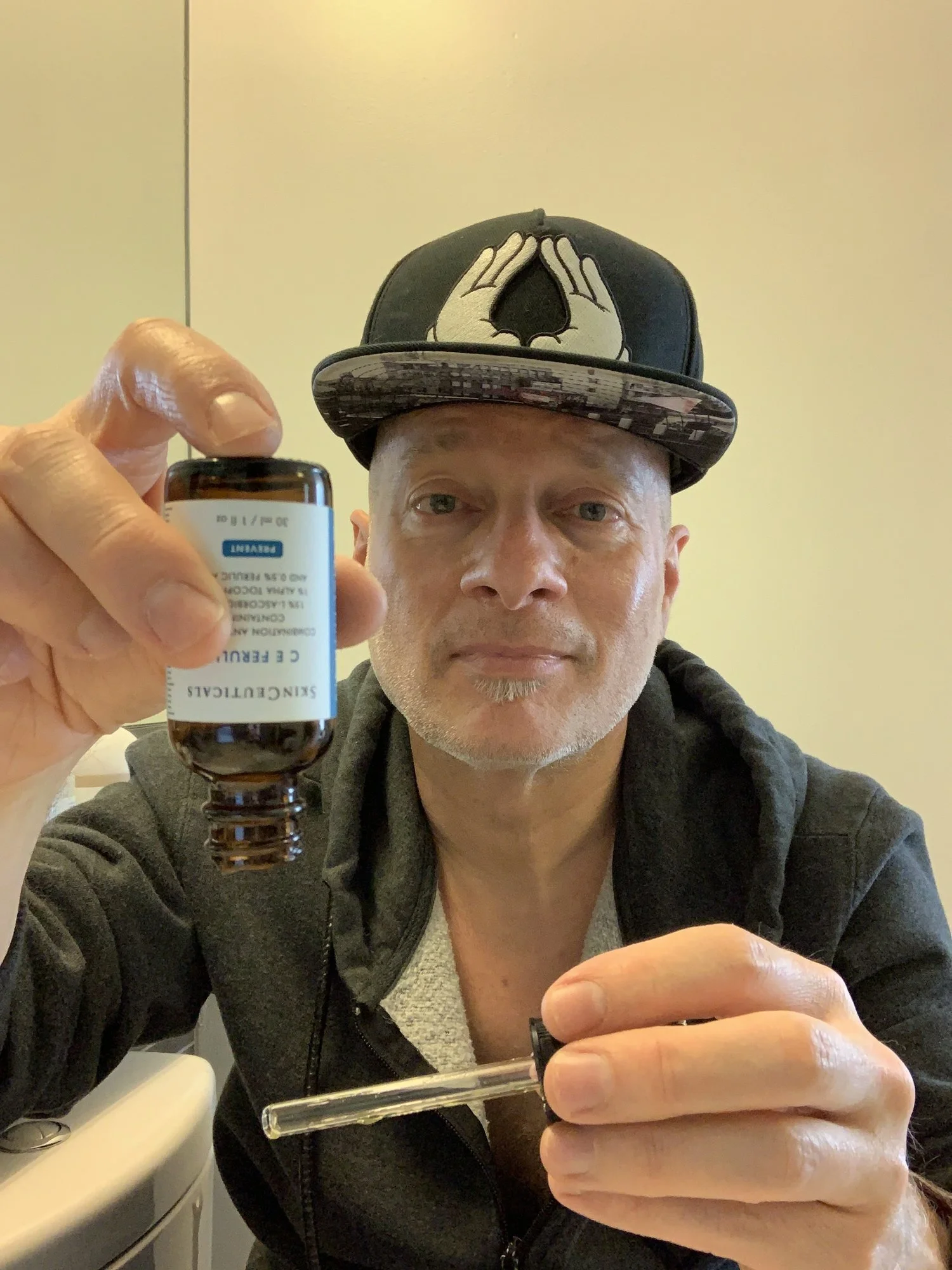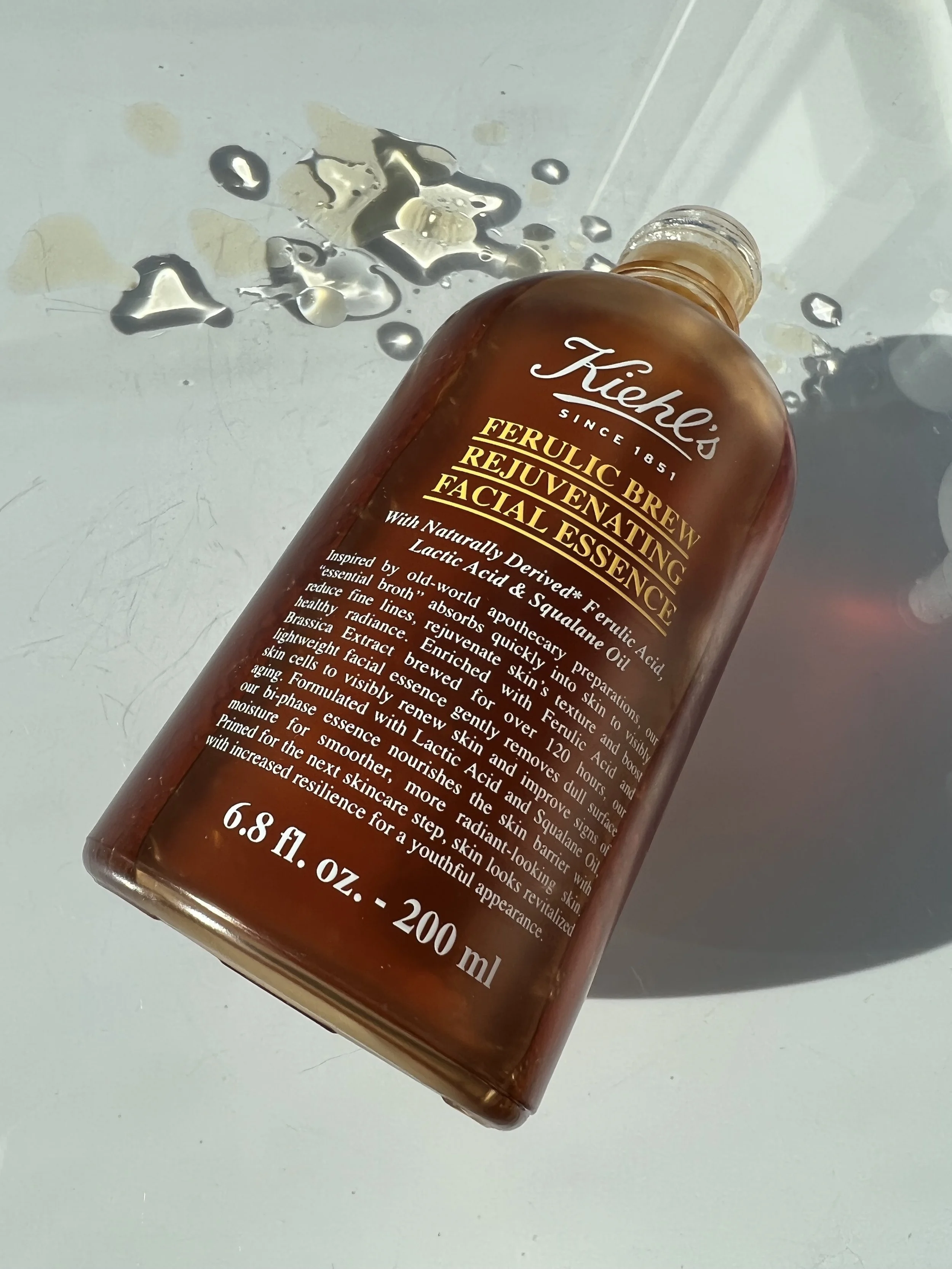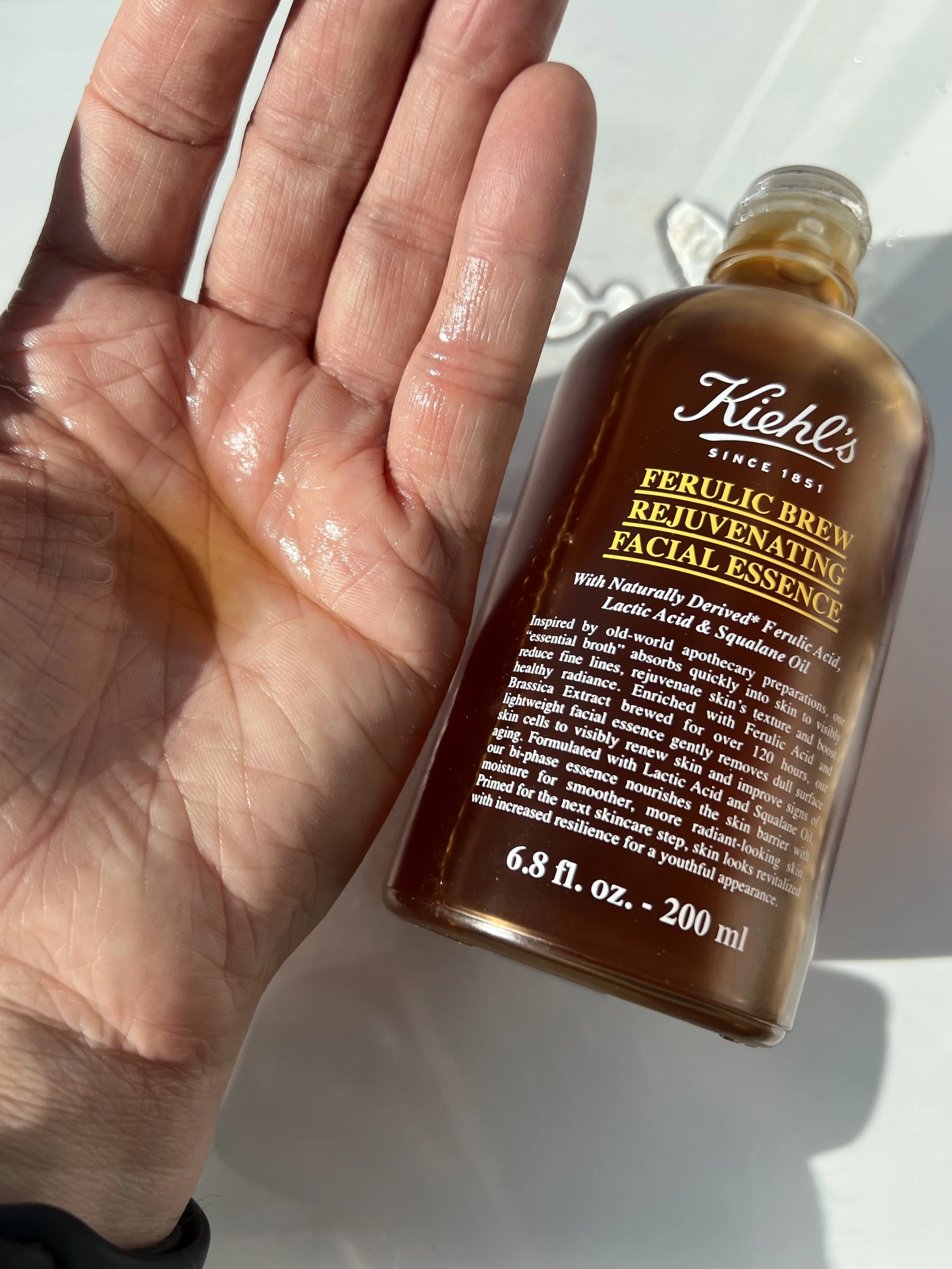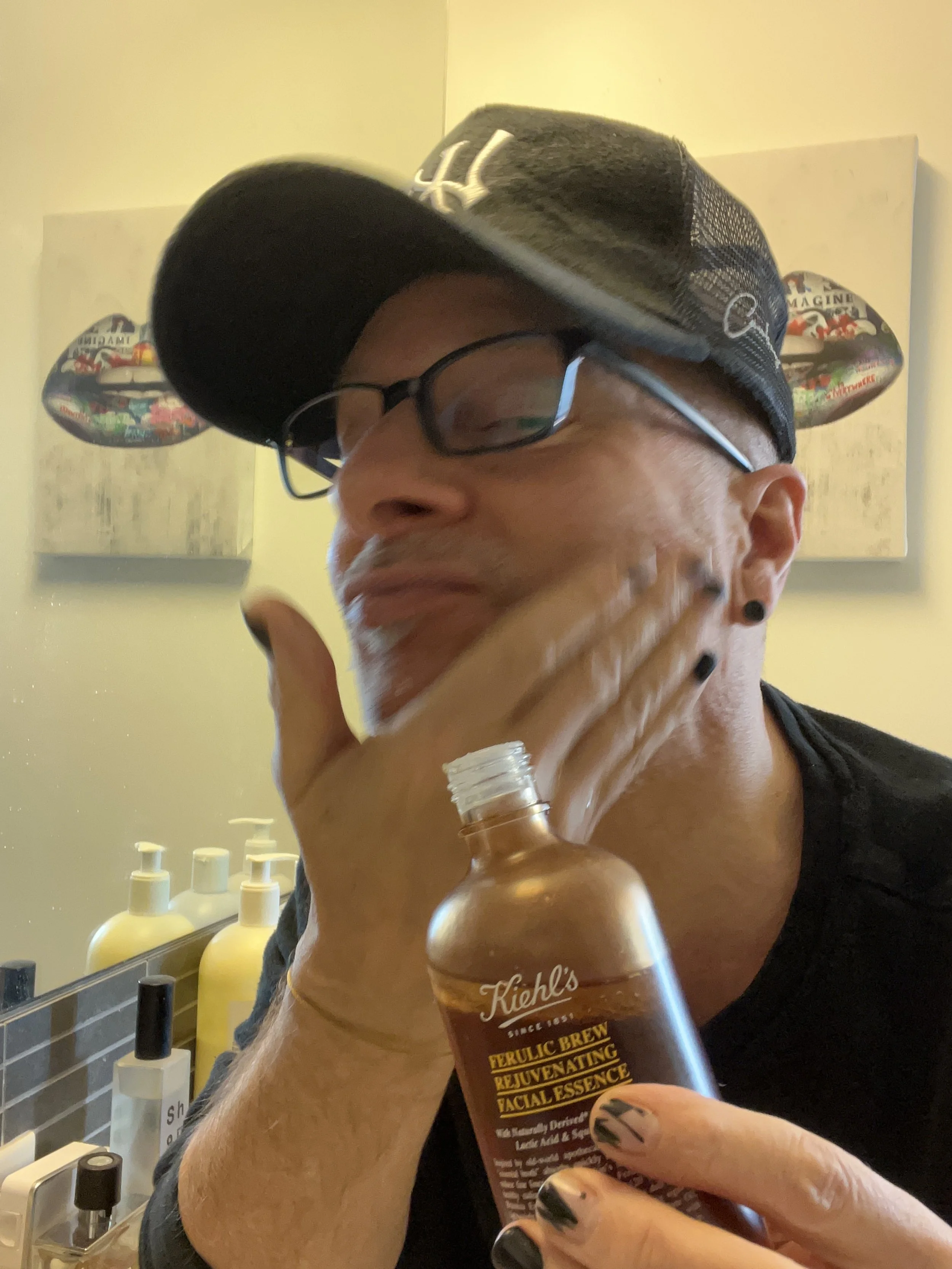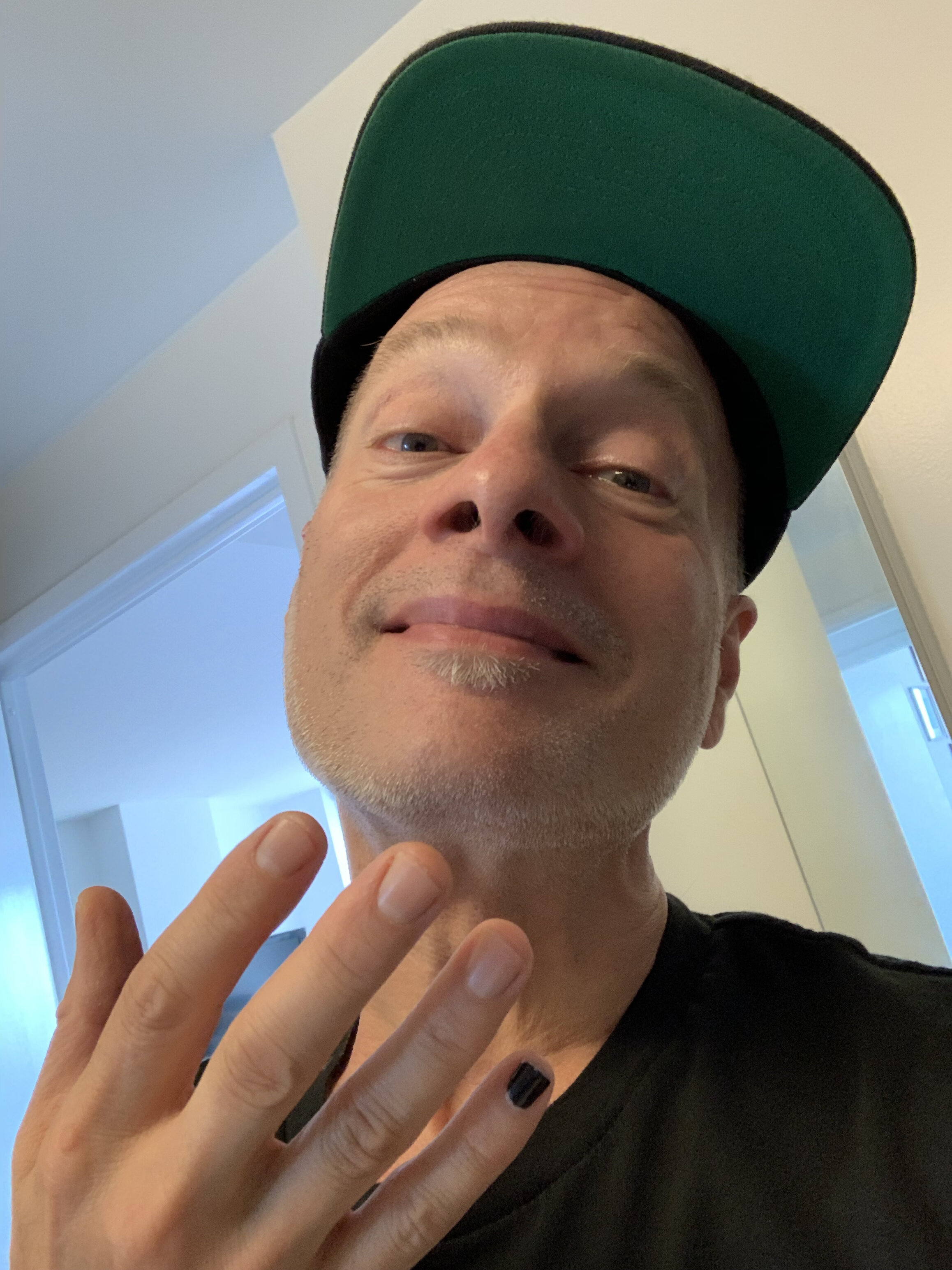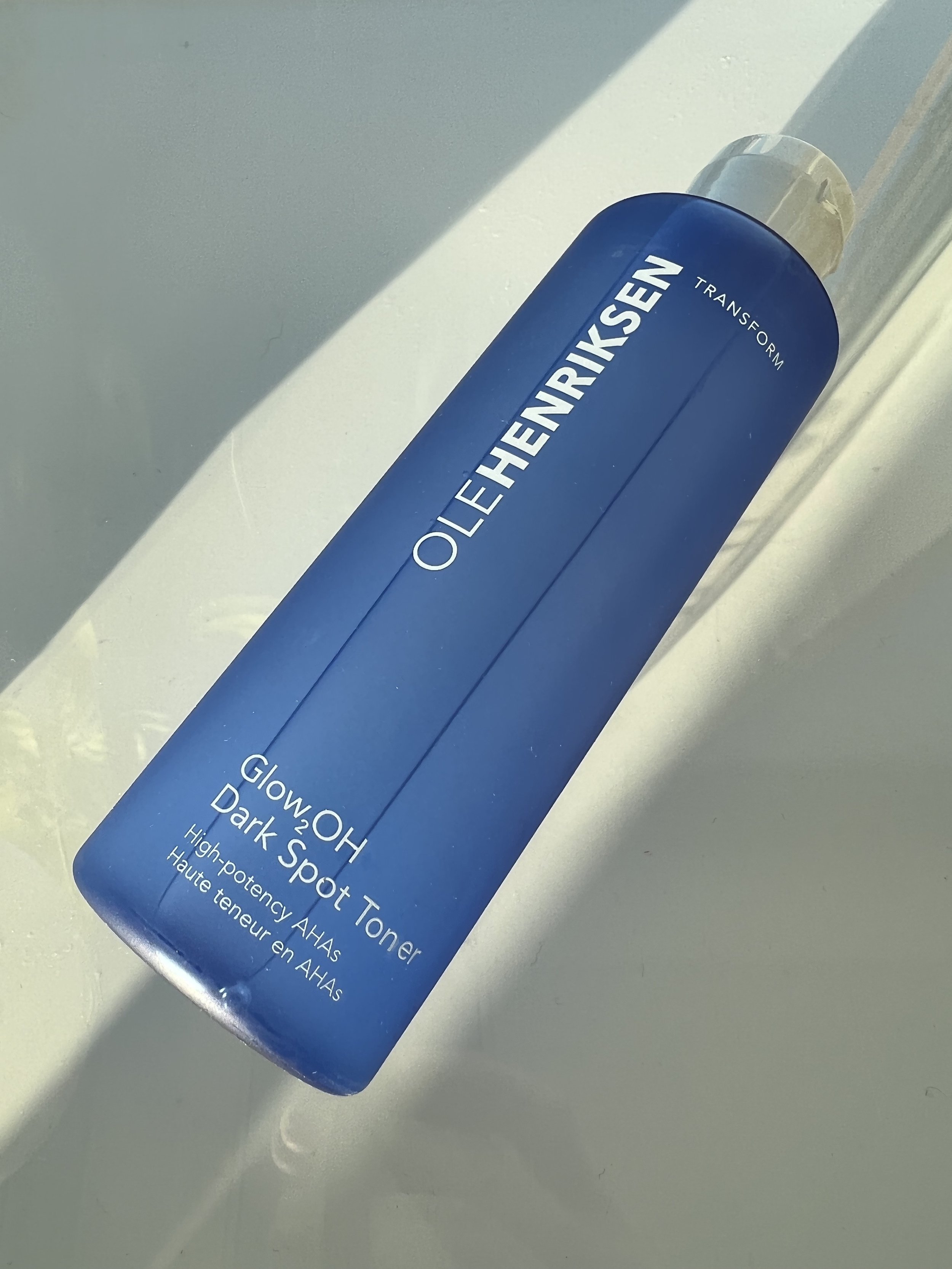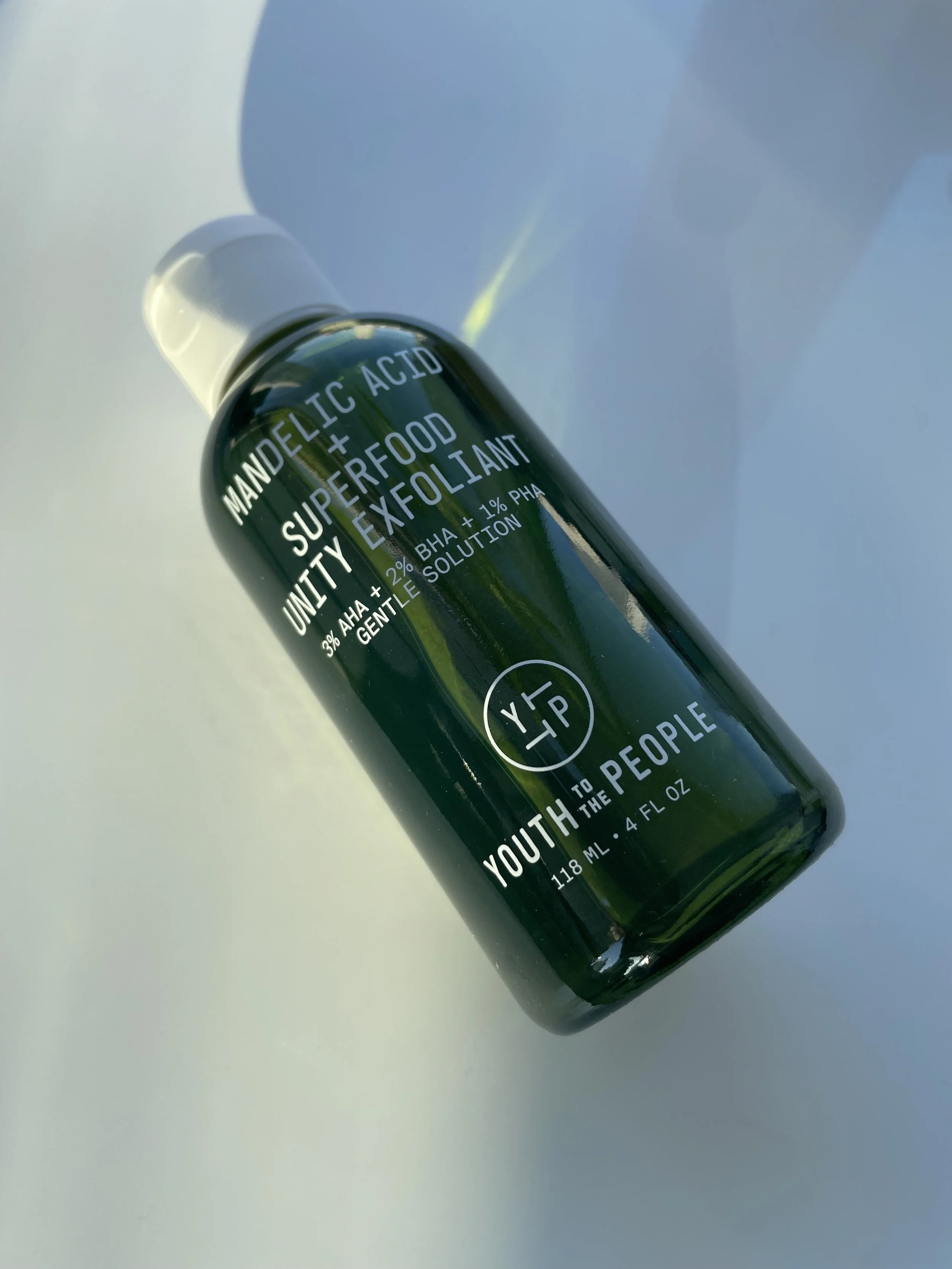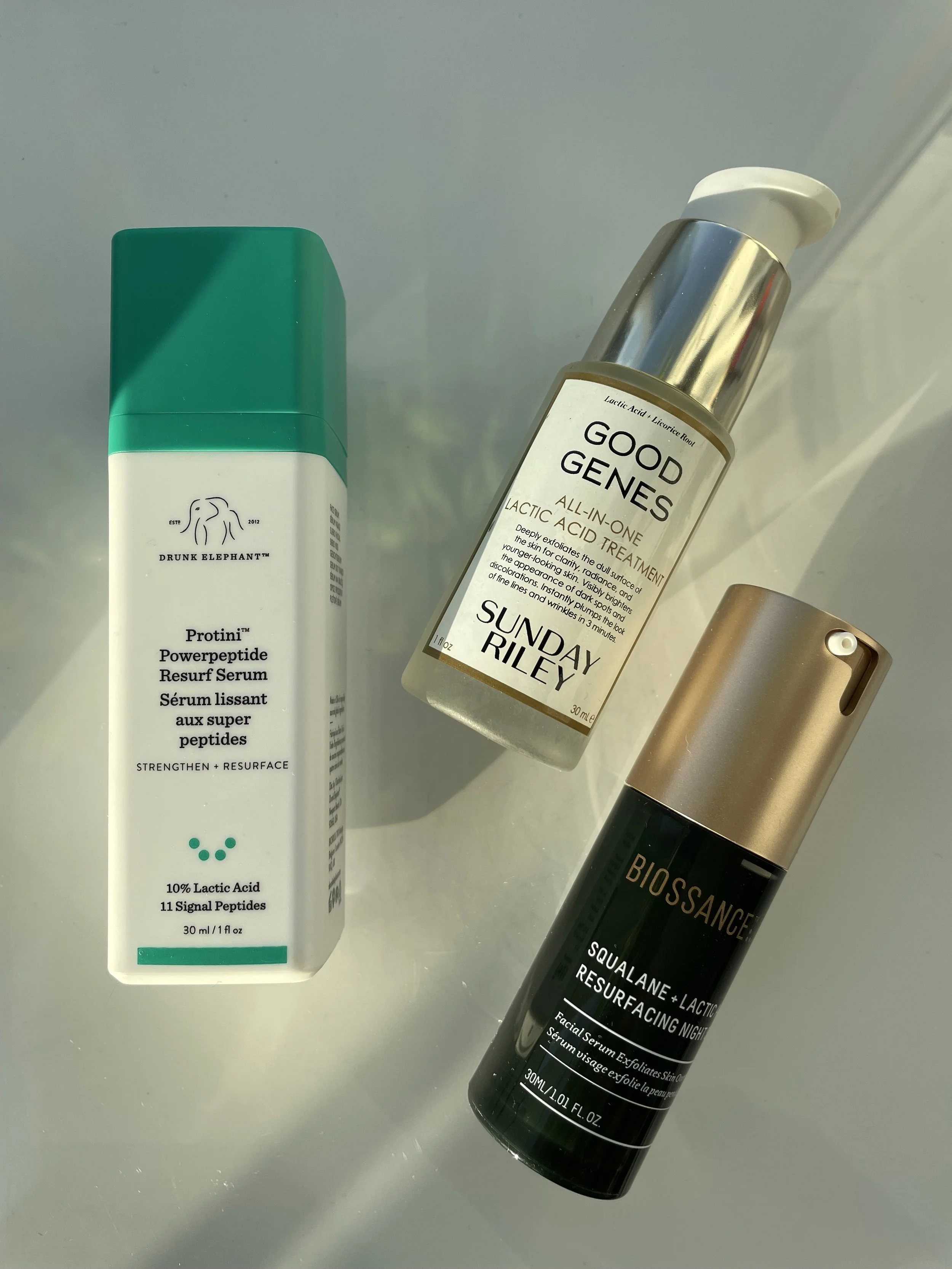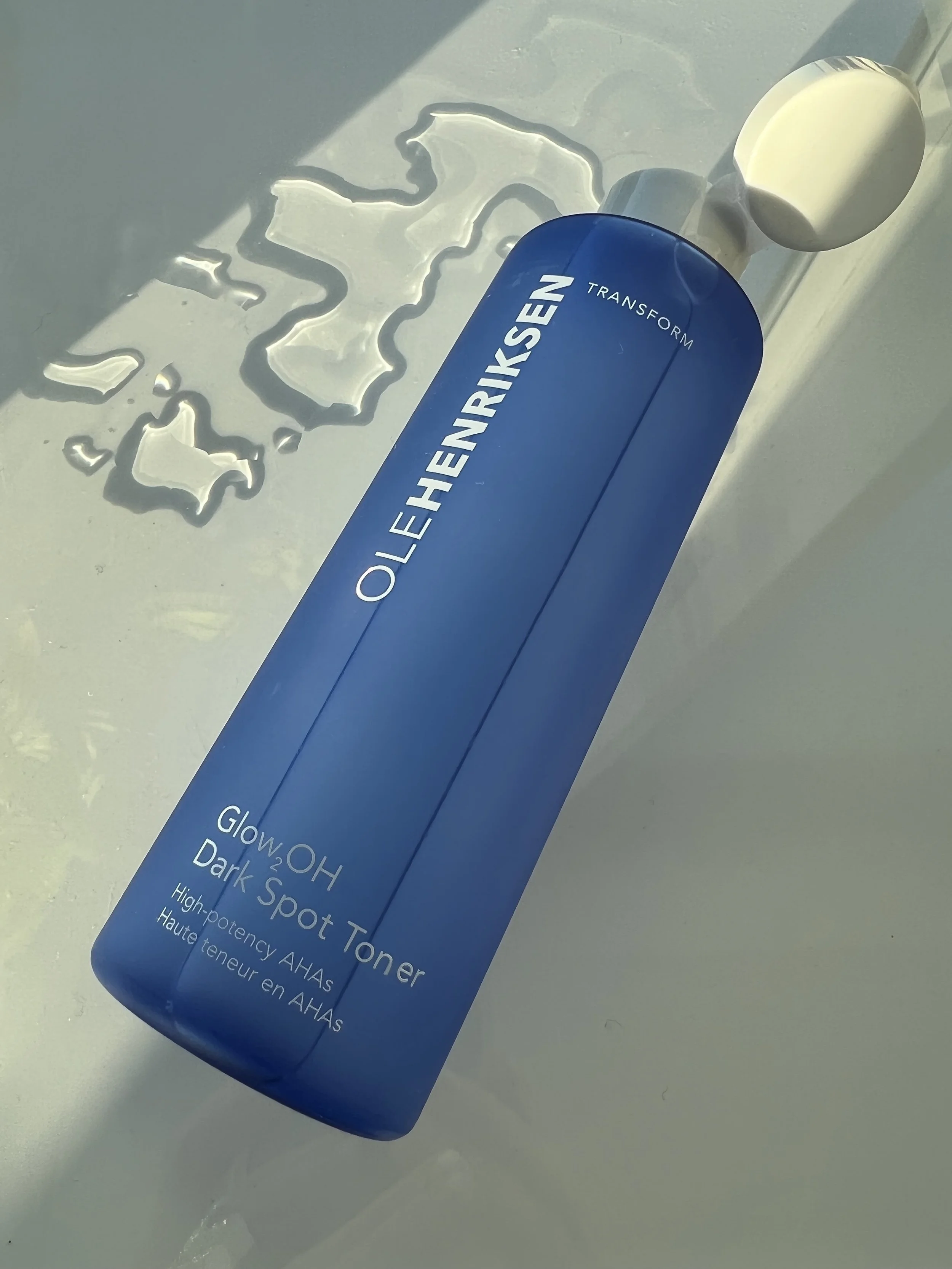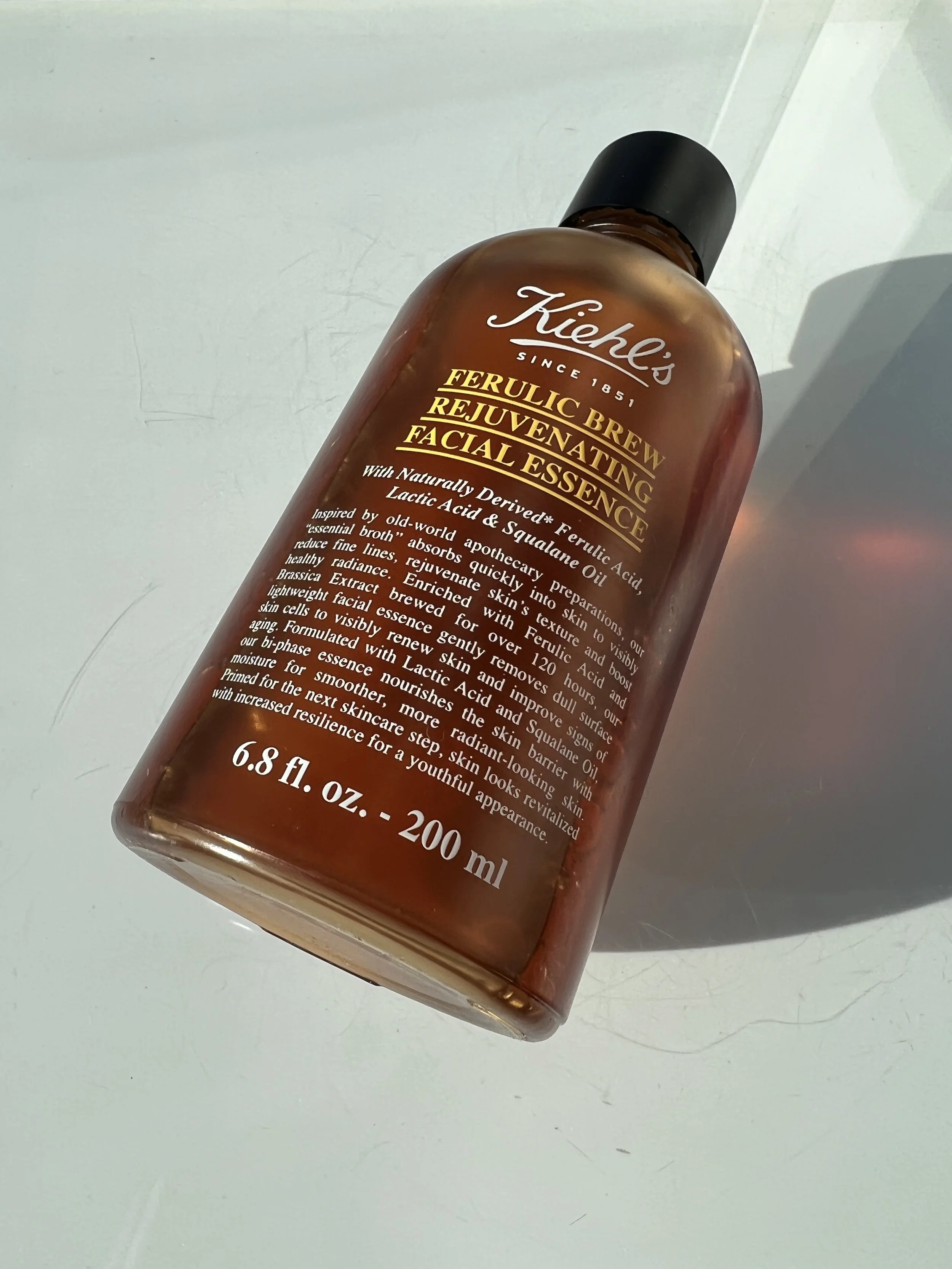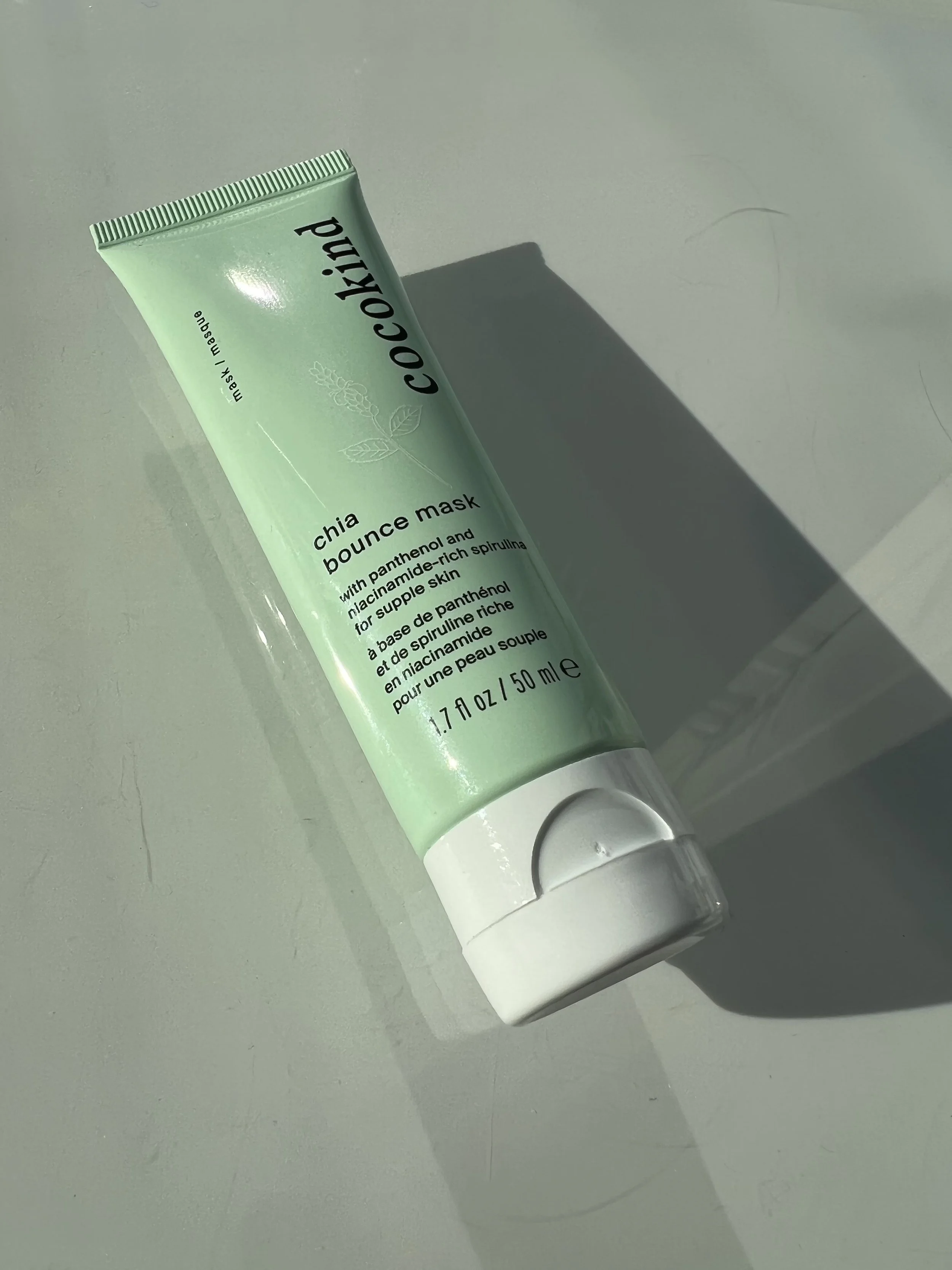THREE NEW TREATMENT TONERS I'M INTO FROM KIEHL'S, DR. ZENOVIA AND OLE HENRIKSEN – BEST VITAMIN C TONER, BEST BRIGHTENING TONER FOR DULL SKIN
I had a fun, adventurous week — full of phenomenal vegan meals and inspiring art exhibits.
For the second time over the pandemic, New York City lifted its indoor mask mandate for the 85% of New Yorkers who are vaccinated. I took full advantage to get out and enjoy the City anew.
Mid-week, I fulfilled a dream for a good friend and me to experience the most bougie vegan restaurant in New York City, Eleven Madison Park.
My friend is the most important vegan influence in my life and we thought we’d seize the opportunity to celebrate our veganism — and his birthday.
As the name suggests, Eleven Madison Park is adjacent to Madison Square Park, in Midtown Manhattan. In my early days working at Kiehl’s, the company’s home offices were located just blocks north of the park and I spent many lunches and quiet moments shaded by its trees, enchanted by its quietude. In fact, unbeknownst to many of my co-workers at the time, several Kiehl’s product names were thought up by me on one of the benches lining Madison Square Park. That’s some New York history right there!
Eleven Madison Park has long been one of the fanciest (and priciest!) restaurants in NYC. Last October, as the lockdown was receding, the head chef and owner, Daniel Humm, reopened his restaurant as fully vegan with a 100% plant-based, 10-course tasting menu.
The meal — all 10 dishes — was extraordinary. Among the most notable was an onion tart draped in fresh truffle and a “tonburi,” a plant-based caviar, with cauliflower and coated with Moroccan za’atar spice. The final, tenth course was a citrus popsicle.
In fact, not only was it the finest vegan meal of my year-long adventure in veganism, but the finest meal of my life. I have never experienced anything like it!
I topped off the week with a visit to one of the most intriguing photography exhibits in the City, Fotografiska. A multi-story exhibit in Midtown (not far from Madison Square Park!), I’ve experienced the NYC location of the renowned Stockholm art and photography destination a few times.
There’s a super cool Warhol exhibit featuring an extensive collection of seemingly random Polaroids taken by the pop-art photographer. But perhaps the most intriguing current exhibit at Fotografiska is a limited collection of photos of a diverse range of people matched to their skin’s Pantone color. It felt like the perfect reflection of the diversity of New York City itself.
Ahh, New York, welcome back…
The skincare stuff starts here.
I love diversifying my skin care with the change of seasons and a change in my mood. And I love, love, love toners. I alternate between hydrating toners and more active treatment toners in my skincare routine — and often use one of each, one after the other. As crazy as it may sound, it is not uncommon for me to use three different toners in a routine: an antioxidant toner, a hydrating toner, and a treatment toner powered by an exfoliating acid.
I think toners are wildly misunderstood. The funny thing about toners is that not all are created equal — or do the same thing. There are two major types of toners: hydrating toners and acid, or treatment toners. The two are not mutually exclusive; that is, you don’t use one or the other. While they’re both called toners, they have completely distinct purposes and benefits for the skin.
But my favorite toner is an antioxidant toner: NIOD’s Superoxide Dismutase Saccharide Mist. As with everything NIOD offers, the Superoxide Dismutase Saccharide Mist isn’t just some run-of-the-mill skincare product; and it’s much more than a hydrating toner. (NIOD denies that SDSM2 is a toner at all.)
PRODUCT REVIEW: NIOD SUPEROXIDE DISMUTASE SACCHARIDE MIST (SDSM2) - BEST ANTIOXIDANT TONER
SDSM2 is enriched with Superoxide Dismutase — a naturally occurring antioxidant found in the skin that’s the body’s most essential antioxidant to fend off cell damage. I use it religiously immediately after cleansing, day and night. Be sure to catch my review of it on the blog here.
Every skincare routine, morning and evening, should consist of a hydrating toner — applied immediately following cleansing. Hydration is a must for skin health, central to a K-beauty routine and IMO essential to a robust and healthy skincare regimen.
A treatment toner, on the other hand, is formulated with any number of beneficial exfoliating acids — usually one or more actives from the class of hydroxy acids — AHAs, BHAs or PHAs. After applying a hydrating toner, if you want to use a treatment toner to exfoliate and boost skin’s desquamation process, you can (and should!).
My latest deep-dive into treatment toners came in the fall in an article titled, Seasonal Skincare Transitioning: Treatment Toners I Love That Make Me Excited For Cold Weather. In it, I featured some of the best exfoliating toners with Glycolic Acid, Salicylic Acid and even Mandelic Acid. You can catch the full article here.
SEASONAL SKINCARE TRANSITIONING: TREATMENT TONERS I LOVE THAT MAKE ME EXCITED FOR COLD WEATHER
One of my favorite products six months later remains the Farmacy Deep Sweep 2% BHA Pore Cleaning Toner with Moringa + Papaya. As far as exfoliating toners go, the Deep Sweep 2% BHA Pore Cleaning Toner is a good, clean formula and among the best Salicylic Acid treatments for face. It’s a safe-for-skin, refreshing, effective treatment toner and a pleasure to use.
As I said in my initial review of it, I’m so impressed by Farmacy’s Deep Sweep BHA toner and really appreciate the pro-skin health approach, making it useful for all skin types, not just those with oily, acne-prone skin who benefit most from Salicylic Acid.
PRODUCT REVIEW: FARMACY DEEP SWEEP 2% BHA PORE CLEANING TONER – BEST SALICYLIC ACID TONER FOR OILY SKIN
But a word of caution…
There are so many things I love about skincare and how skincare products work with the skin. But there’s one entire skincare habit which, while popular, is quite out of control. And that’s exfoliation and the overuse of exfoliating treatments, including acid-powered treatment toners.
Unlike so much of what we do for our skin — including moisturizing, cleansing and protecting from sun damage — the one thing skin does pretty well on its own is the basic function of desquamation.
Every skin cell originating in the lower levels of the skin rises to the surface within 28 days, where it’s freed from the body — like pollen gently floating from wild poppy flowers and disappearing into the air over the horizon.
What Does Desquamation Mean and Why Does Desquamation Occur?
In short, desquamation is a term that encompasses cell regeneration, cell death and exfoliation. More specifically, desquamation is the process by which the skin generates new skin cells and, 28 days or so later, sheds them. Desquamation essentially encompasses the life cycle of a skin cell. A treatment toner formulated with an alpha hydroxy acid like Glycolic Acid can, if formulated properly and at the precise pH level, amplify the cell turnover process.
There’s an excellent, insightful piece on the Very Well Health website titled, Desquamation Process and the Outer Layer of Skin. According to the health site Very Well Health:
Desquamation is the natural process in which skin cells are created, sloughed away, and replaced. The desquamation process happens in the outermost layer of the skin called the epidermis. The epidermis itself has four unique layers. Each of these layers plays a role in desquamation.
Skin Cells are Born
Sometimes called cell turnover, desquamation happens every second of the day, without you even noticing.
New skin cells are created in the stratum germinativum, which is the deepest layer of the epidermis. This layer is also called the basal layer.
Skin cells begin their life as a single layer of thick, column-shaped cells. These cells are responsible for creating every cell of your skin.
The cells in this layer divide. Half of them stay behind in the stratum germinativum. The other cells begin their migration to the skin's surface.
Cells Reach the Surface, Then Slough Off
The skin cells have reached their final destination — the stratum corneum. Once the cells arrive at this uppermost layer of the skin they are essentially dead.
The cells in the stratum corneum are very flat and tightly packed. These flat, dead cells continuously fall away as newer cells push their way to the surface. In this way, your skin is constantly renewing itself.
Where do all of those dead skin cells go? You might be surprised to know that most of the dust in your home is actually made up of dead skin cells.
The entire desquamation process, from cell birth to sloughing away, takes approximately 14 to 28 days.
Because the desquamation process is so efficient and methodical, I don’t believe skin needs or can generally tolerate daily exfoliation — whether chemical or physical. That’s why it’s essential to incorporate multiple toners into your routine. Make a habit of using a toner that hydrates the skin AM and PM and perhaps three or four times per week, apply a treatment toner with an exfoliating acid that works for your skin.
In fact, I don’t use a chemical exfoliant — either a treatment toner or acid-powered serum — more than thrice weekly. Even if skin tolerates excess exfoliation, it doesn’t need it as often as you may think. In fact, our skin doesn’t need us to do anything when it comes to exfoliation.
That said, the kind of exfoliation you can achieve with popular, iconic products like the Sunday Riley Good Genes All-In-One Lactic Acid Treatment or a personal fave, the Paula’s Choice Skin Perfecting 2% Bha Liquid Exfoliant, helps to speed up the process of desquamation. Doing so, leaves the complexion free of dead skin. Dead skin cells aren’t doing you any favors.
PRODUCT REVIEW: PAULA’S CHOICE SKIN PERFECTING 2% BHA LIQUID EXFOLIANT – BEST EXFOLIATING TREATMENT
While AHA and BHA-powered chemical exfoliators are the best acid treatments available, they’re not always the most gentle. And sometimes are no more exfoliating than a hydrating toner. The potency and efficacy of an acid toner is dependent on the pH level of the formula and which of the six alpha hydroxy acids are being used; the most potent being Glycolic Acid, the least, Mandelic Acid.
That said, with an acid-powered treatment toner, it’s best to be a bit more conservative. Don’t over-do it and even if your skin tolerates it, remember that it may not even need it. Again, I like to alternate between an acid toner, a hydrating toner and even an antioxidant toner.
With that, let’s take a look at three of my new fave treatment toner discoveries of the last few weeks — an acid toner, a hydrating toner and a cool, new antioxidant toner…
Kiehl's Since 1851 | Ferulic Brew Facial Treatment Essence with Lactic Acid
I always feel a bit nostalgic whenever I talk about a Kiehl’s product. I worked on the Kiehl’s brand for seven years in the early 2000s as the company’s first ever copywriter. So it will always have a special place in my heart. And It’s great to see the brand coming out with cool, new, innovative products that my colleagues and I could never have imagined a decade ago.
The most innovative product I worked on at the time was Kiehl’s Powerful Strength Line-Reducing Concentrate — a Vitamin C-powered brightening serum. Vitamin C serums aren’t that big a deal today but back then, with its initial 10% concentration of Vitamin C, the stuff was legitimate innovation. Vitamin C serums with concentrations of 10% or higher were not possible up to that point due to the instability of Vitamin C in a formula. Even we were impressed!
With its antioxidant potency, Powerful Strength Line-Reducing Concentrate rivaled the industry leader in Vitamin C serums, the SkinCeuticals C E Ferulic Antioxidant Serum. With its 15% concentration of Pure Vitamin C (L-Ascorbic Acid), the C E Ferulic Antioxidant Serum is certainly the OG Vitamin C serum.
Back in the day, I was fortunate enough to be able to stock up on C E Ferulic at the L’Oreal company store using my gratis, my free quarterly skincare allotment. Over my Kiehl’s career, I must’ve gone through a few dozen bottles of what was at one time the best Vitamin C serum available anywhere. As I write this, I don’t even consider the SkinCeuticals C E Ferulic Antioxidant Serum all that innovative — or unique.
Innovation is like that. Look at the BlackBerry! Today, using a BlackBerry would feel like you might as well be living in a cave and cooking on rocks.
PRODUCT REVIEW: SKINCEUTICALS C E FERULIC ANTIOXIDANT SERUM – AMONG THE BEST VITAMIN C SERUMS
So I was naturally excited to try Kiehl’s new Ferulic Brew Facial Treatment Essence with Lactic Acid. It’s so full of intrigue, starting with the name. Here’s what the brand has to say about the antioxidant toner: “With ingredients brewed for 120 hours, this 99%** natural formula with Ferulic Acid, Lactic Acid (AHA) & Squalane provides powerful antioxidant protection to visibly smooth and even skin’s texture and tone, reduce fine lines and leave skin with a healthy-looking glow.”
That’s a lot to say that Ferulic Brew is unique and innovative – and wonderfully pro-skin health. In fact, I’ve never experienced anything even remotely similar to Kiehl’s Ferulic Brew Facial Treatment Essence. It’s truly one-of-a-kind.
One of the actives that makes it so exceptional is Ferulic Acid. Ferulic Acid is one of the most potent antioxidants used in skincare and also happens to be an ideal stabilizer for notoriously unstable Vitamin C. Ferulic Acid is what made the SkinCeuticals C E Ferulic Antioxidant Serum possible nearly two decades ago. And, indeed, there’s a small amount of Vitamin C in the Ferulic Brew formula in the form of Ascorbyl Glucoside.
What Is Ferulic Acid and Does Vitamin C Need Ferulic Acid?
For the answer, I turn to the experts on the Paula’s Choice Research Team. They go in depth on the derivations of Ferulic Acid and its exceptional benefits for the skin — and for stabilizing Vitamin C in a skincare formula. Here are their most important insights…
Ferulic Acid is an “antioxidant that helps defend skin from the signs of sun damage and environmental assault
Improves stability and efficacy of other antioxidants, such as vitamins C and E
Research indicates ferulic acid can help inhibit discolorations
Naturally found in plants, such as bran and bamboo
As a raw material, ferulic acid is supplied as a crystalline powder
Ferulic Acid Description
Ferulic acid is a phenolic antioxidant (a type that intercepts damaging hydrogen radicals) that is naturally found in bran and bamboo shoots, among other plants. Research has shown that it provides its own benefits to skin while also enhancing the stability of other antioxidants, such as vitamins C and E, when paired with them.
Of note, ferulic acid plays a significant photoprotective role, which is one of the reasons it’s a welcome addition in sunscreen formulations.
Research also indicates that it has the ability to inhibit certain triggers of skin discolorations, making ferulic acid a nice complement to products that are intended for evening skin tone. In general, it also helps defend skin against environmental assault.
Ferulic acid can be used in the types of high concentration chemical peels available in a dermatologist/esthetician setting, where it is usually combined with other acids, such as lactic, to address signs of photoaging. Ferulic acid’s soothing properties are believed to help reduce potential skin-irritating side effects of such peels.
As a raw material, ferulic acid comes as a crystalline powder that is insoluble in water at room temperature but reaches solubility in higher water temps. It is also soluble in other types of solvents.
Ferulic acid is shown to be most effective at boosting the results from other antioxidants when used in concentrations of 0.5% or greater. It is typically not used above 1%, as doing so can impart an undesirable color to a skin care formula.”
But the Kiehl’s Ferulic Brew Facial Treatment Essence is more than a potent antioxidant toner. With just under a 4% concentration of Lactic Acid, it can deliver a milder exfoliating benefit than most exfoliating toners powered by alpha hydroxy acids. In addition, there’s a small amount of Salicylic Acid at about one percent.
Nourishing fermented Rice Ferment Filtrate is ingredient number two after water — the “brew” part of the formula. There are also several moisturizing, replenishing plant oils, including Squalane and Sunflower Seed Oil.
Regrettably, the Ferulic Brew Facial Treatment Essence is no miracle for sensitive skin. The 99% natural formula is infused with potential skin irritants in the form of fragrant plant essential oils, including two of the worst: Lavender Oil and Peppermint Oil.
Still, I can’t get enough of it. It has the scent of a robust, fresh tea and a silky, almost oily consistency that feels great on application. I’ve used it multiple times in a week and seen no irritation. Ferulic Brew is really such a pleasure to use!
What I like about it: The Kiehl’s Ferulic Brew Facial Treatment Essence with Lactic Acid is packed with antioxidants, including its star Ferulic Acid. I love the slightly oily texture and its fresh herbal aroma.
What I don’t like about it: Regrettably, there are several fragrant plant oils in the formula that can be sensitizing to the skin, among them the two worst violators, Lavender Oil and Peppermint Oil. If you have sensitive skin, you’ll need to find another option.
Who it’s for: All skin types, except sensitive skin.
SHOP THE BLOG: Purchase the Kiehl's Since 1851 Ferulic Brew Facial Treatment Essence with Lactic Acid for $54 here.
The Ingredient List of the Kiehl's Since 1851 Ferulic Brew Facial Treatment Essence with Lactic Acid:
 sii, Saccharomyces/Rice Ferment Filtrate (4.7%), Dicaprylyl Ether emo|solv, Glycerin
sii, Saccharomyces/Rice Ferment Filtrate (4.7%), Dicaprylyl Ether emo|solv, Glycerin  sii|h 0 0, Pentylene Glycol solv|h, Lactic Acid (3.7%)
sii|h 0 0, Pentylene Glycol solv|h, Lactic Acid (3.7%)  exf|h|buff, Propanediol solv|h, Squalane
exf|h|buff, Propanediol solv|h, Squalane  sii|emo 0 1, Butylene Glycol h|solv|vc 0 1, Sodium Chloride vc, Tocopherol
sii|emo 0 1, Butylene Glycol h|solv|vc 0 1, Sodium Chloride vc, Tocopherol  aox 0-3 0-3, Ascorbyl Glucoside
aox 0-3 0-3, Ascorbyl Glucoside  aox|sb, Salicylic Acid
aox|sb, Salicylic Acid  exf|aacne|so|pres, Ferulic Acid (0.1%)
exf|aacne|so|pres, Ferulic Acid (0.1%)  aox|amic, Caramel col, Adenosine
aox|amic, Caramel col, Adenosine  cci, Lavandula Hybrida Oil emo, Helianthus Annuus Seed Oil/Sunflower Seed Oil
cci, Lavandula Hybrida Oil emo, Helianthus Annuus Seed Oil/Sunflower Seed Oil  emo 0 0, Cupressus Sempervirens Leaf/Nut/Stem Oil emo, Anthemis Nobilis Flower Oil
emo 0 0, Cupressus Sempervirens Leaf/Nut/Stem Oil emo, Anthemis Nobilis Flower Oil  so|perf, Linalool
so|perf, Linalool  perf, Pelargonium Graveolens Flower Oil
perf, Pelargonium Graveolens Flower Oil  perf, Brassica Campestris Extract/Rapeseed Extract, Brassica Campestris Sprout Extract h, Grape Seed
perf, Brassica Campestris Extract/Rapeseed Extract, Brassica Campestris Sprout Extract h, Grape Seed  aox|emo, Sprout Extract aox, Mentha Piperita Oil/Peppermint Oil
aox|emo, Sprout Extract aox, Mentha Piperita Oil/Peppermint Oil  perf, Sodium Hyaluronate
perf, Sodium Hyaluronate  sii|h 0 0, Citronellol
sii|h 0 0, Citronellol  perf, Geraniol
perf, Geraniol  perf, Limonene
perf, Limonene  perf|solv, Origanum Majorana Leaf Oil
perf|solv, Origanum Majorana Leaf OilSKINCARE 101 : HOW TO WAKE UP GLOWING! (WITH AN AHA, BHA OR PHA OVERNIGHT TREATMENT)
Dr. Zenovia Skincare | Vitamin C Brightening Toner
One of the more intriguing of my brand discoveries over the last several months has been a rather obscure, relatively unknown dermatologist brand. Dr. Zenovia Skincare offers what the brand terms “hormonal skincare”.
Hormonal fluctuations are not unfamiliar to me. Just over two years ago, I entered what can best be described as “male menopause” — characterized by wild swings in my own hormone levels. With hot flashes, sudden dizziness and, worst of all, intense, days-long migraine attacks, it has been nothing short of a horrible experience.
Fortunately, I haven’t noticed any tangible changes in how my skin behaves, though I know that’s a common experience of many woman, particularly during menopause.
The Best Brightening Serums
So who is Dr. Zenovia? Well, according to the brand she’s a board-certified dermatologist and hormonal skin expert, “committed to researching and developing innovative methods to combat leading skin issues from a 360 holistic perspective, including hormonal balance for healthier skin at every stage of life.”
While I’ve featured several products from Dr. Zenovia Skincare on the @skincarma Instagram page, I haven’t had the chance until now to fully review Dr. Zenovia’s products on the blog. And I think the Dr. Zenovia Skincare Vitamin C Brightening Toner is the perfect one to begin with!
I’ve been using the Dr. Zenovia Vitamin C Brightening Toner for several weeks now and have really found it to be exceptional. But, while it’s positioned as a Vitamin C toner, it’s much more than that — and not exactly a Vitamin C powerhouse.
With what I estimate to be a mere 2% concentration of Vitamin C, I think calling it a “Vitamin C Brightening Toner” is a bit of a misnomer. But that’s not to say it’s not a superb formula. Dr. Zenovia’s Skincare Vitamin C Brightening Toner is simply not a replacement for your Vitamin C serum. Consider it an antioxidant adjunct to a regimen that includes a dedicated Vitamin C serum as well as a face cream with Vitamin C.
The Dr. Zenovia Skincare Vitamin C Brightening Toner is more of a hydrating toner infused with powerful antioxidant botanical extracts and vitamins. Among the most notable plant extracts, and most effective used in skincare, are Chamomile Flower Extract, Camellia Sinensis (Green Tea) Leaf Extract, and Camellia Sinensis (White Tea) Leaf Extract. Additional antioxidants include, of course, Vitamin C in the form of pure Ascorbic Acid, Tocopherol Acetate (Vitamin E), Resveratrol and even Bakuchiol — the natural alternative to Retinol.
Antioxidants are vital to any pro-skin health routine and you can’t get enough of them into your skin each day. Using an antioxidant toner like Dr. Zenovia’s Skincare Vitamin C Brightening Toner is the perfect way to do that. I consider antioxidants to be one leg in the triad of products required to meet skin’s daily needs: hydrators and moisturizers, sunscreen, and antioxidants.
What Are Antioxidants and What Do Antioxidants Do for Skin?
Antioxidants like Vitamin C, Niacinamide, and Ferulic Acid possess numerous benefits for the skin, most notably preventing skin damage and the multiple signs of aging that can result. There’s an excellent article from the experts on the Paula’s Choice Research Team titled, How Antioxidants Fight the Signs of Aging that you can catch here. Following is what I found most relevant:
Antioxidants for Skin Benefits
Antioxidants play a unique role when it comes to diminishing the appearance of fine lines and wrinkles. Years of environmental damage (including unprotected sun exposure—one more reason to apply that broad-spectrum sunscreen!) slowly chip away at skin’s natural ability to look and feel healthy. As this damage builds up, skin gradually loses its ability to recover and bounce back as it once did. It’s not an exaggeration to say that after years of damage, skin becomes overwhelmed, and its “look young systems” begin to slow down.
Antioxidants in skin care step in to help shield skin’s surface from further deterioration by calming stressed skin and defending against the visible effects of pollution —something all of us encounter on a daily basis.
What happens as a result of applying antioxidants to your face is truly impressive: Skin’s appearance begins to turn around! It regains a firmer feel and more even skin tone—and those wrinkles you’re probably not fond of will visibly soften.
Antioxidants for Your Skin: What Results You Can Expect?
Although we know that topical application of antioxidants in skin care helps to shield skin from ongoing environmental assault, the results aren't going to make you look 20 years younger—and they may take time to show up. Reality check: The claims attributed to these wonderful ingredients are more often than not overblown or a big stretch of what scientific research has shown to be true.
It’s best to think of antioxidants as part of a trifecta of beneficial ingredients you can use in skin care products to achieve and maintain visibly firmer, youthful-looking skin. Antioxidants should be joined by skin-replenishing ingredients like ceramides, hyaluronic acid, and glycerin plus a range of skin-restoring ingredients like retinol, peptides, and niacinamide. Together, these types of ingredients play a symphony your skin needs to hear—and you’ll love seeing the results every time you look in the mirror.
The trick is to be consistent with your skincare routine and make absolutely sure you’re protecting your skin from sun exposure every day with a broad-spectrum sunscreen rated SPF 30 or greater—and of course, it should be brimming with antioxidants, your skin’s new best friend.
The Dr. Zenovia Skincare Vitamin C Brightening Toner has a super lightweight texture that’s as light as water and easily layered into any skincare routine immediately after cleansing and before an exfoliating toner and water-based serums.
But what about the hormonal aspect that’s Dr. Zenovia’s field of expertise? According to the brand, it’s linked to a complex called REG-ulate 360 Complex™ that “restores a healthy appearance to hormonally imbalanced skin with a blend of medical-grade actives including resveratrol, vitamin E, green tea, bakuchiol, and genistein (a plant-derived phytoestrogen).”
I’m more down with the fact that the Vitamin C Brightening Toner is a superb antioxidant toner that helps defend the skin from skin-aging damage.
What I like about it: I like that the Dr. Zenovia Skincare Vitamin C Brightening Toner contains a veritable powerhouse of antioxidants in the form of botanical extracts and vitamins, including Vitamin C, Vitamin E, Resveratrol and Bakuchiol. It’s got a wonderful texture that makes it easily layered into any skincare routine.
What I don’t like about it: There’s a small amount of Lavender Oil that can be sensitizing to reactive skin, though I don’t believe it’s enough to be problematic.
Who it’s for: All skin types, except perhaps very sensitive skin.
SHOP THE BLOG: Purchase the Dr. Zenovia Skincare Vitamin C Brightening Toner for $38 here.
The Ingredient List of the Dr. Zenovia Skincare Vitamin C Brightening Toner:
Purified Water, Methyl Gluceth-20, Sodium PCA, Hamamelis Virginiana (Witch Hazel) Extract, Chamomilla Recutita (Matricaria) Flower Extract, Camellia Sinensis (Green Tea) Leaf Extract, Camellia Sinensis (Green Tea) Polyphenols, Camellia Sinensis (White Tea) Leaf Extract, Symphytum Officinale (Comfrey) Extract, Cucumis Sativus (Cucumber) Fruit Extract, Punica Granatum Sterols, Genistein, Aloe Barbadensis Leaf Juice, Tocopherol Acetate, Resveratrol, Bakuchiol, Sea Salt, Ascorbic Acid, Panthenol, Lavandula Angustifolia (Lavender) Oil, Glycerin, Polysorbate 20, Sodium Benzoate, Disodium EDTA, Phenoxyethanol.
Ole Henriksen | Glow2OH Dark Spot Toner
The first time I experienced Ole Henrisken was the brand’s Goodnight Glow Bakuchiol Sleeping Crème, the first Bakuchiol product I’d ever tried. That was well over four years ago, long before Bakuchiol exploded onto the scene as a favorite alternative to Retinol, the best anti-aging ingredient in skincare.
The Ole Henriksen brand will always have a special place in my heart. Several years ago, in 2017, I was hired to work on a rebranding of the iconic, LA-based spa brand. I spent many waking hours over the course of that year renaming products, crafting packaging copy, and helping to realign the product architecture around key benefit-focused franchises.
And Ole Henriksen’s Glow2OH Dark Spot Toner is perhaps my favorite product of the brand’s extensive offerings. With what I estimate to be a 20% concentration of Glycolic Acid, the Glow2OH Dark Spot Toner is one of the most potent exfoliating toners I’ve come across.
PRODUCT REVIEW: YOUTH TO THE PEOPLE MANDELIC ACID + SUPERFOOD UNITY EXFOLIANT – BEST TONER FOR OILY SKIN
In addition to its very high levels of AHA Glycolic Acid, there’s also about a 5% concentration of Lactic Acid in the formula. This stuff is not for the faint of heart! If you’re in the market for a serious exfoliating treatment toner, the Ole Henriksen Glow2OH Dark Spot Toner is the perfect option.
As I’ve shared previously, my skin doesn’t really love Glycolic Acid and I can’t tolerate it at a level above 10% more than twice weekly. For enhanced exfoliation, I prefer a Lactic Acid serum or toner in my skincare routines.
I recently took a deep dive into the best Lactic Acid serums on the blog a few weeks ago in an article titled, 3 Lactic Acid Treatments to Get Your Complexion Lit in the New Year from Drunk Elephant, Biossance and Sunday Riley. Be sure to check it out here.
3 LACTIC ACID SERUMS TO GET YOUR COMPLEXION LIT IN THE NEW YEAR FROM DRUNK ELEPHANT, BIOSSANCE & SUNDAY RILEY
The Ole Henriksen Glow2OH Dark Spot Toner is truly a brightening powerhouse and may even have an effect on moderate dark spots and an uneven skin tone. In addition to its AHA content, there are several natural brightening extracts, including Lemon Fruit Extract, Sugar Cane Extract and Licorice Root Extract — a favorite botanical brightener of so many wonderful K-beauty products.
The Glow2OH Dark Spot Toner has a super lightweight watery texture that’s as easily applied with palms as it is with a cotton pad. It’s also an absolute pleasure to use, and one of the more pleasurable exfoliating toners.
What Is Glycolic Acid and What Does Glycolic Acid Do to Your Face?
There is an insightful article from the experts on the Paula’s Choice Research Team titled, Glycolic Acid: What It Is and Why You Should Use It. In it, the experts expound on the many superb benefits of Glycolic Acid for the skin.
Glycolic Acid Benefits
Using an exfoliant with glycolic acid for your face results in a brighter, more even toned complexion. Like all AHAs, glycolic acid works by helping turn over spent cells on skin’s surface.
This type of exfoliation addresses numerous skin concerns, including sun damage, uneven tone, rough, flaky patches of skin, fine lines, and wrinkles. In higher concentrations, glycolic acid can even improve the look of deeper wrinkles.
Studies also show that glycolic acid significantly increases skin’s hydration. It does this by helping skin make substances like mucopolysaccharides, which help skin stay hydrated by increasing its natural content of hyaluronic acid, which in turn enhances skin’s resilience.
One exciting new note about glycolic acid: emerging research shows it might even protect skin against UV damage (in addition to reducing its damaging after-effects), though more studies need to be done and of course it doesn’t replace the need for sunscreen. Still, it’s a promising development!
Glycolic acid occurs naturally in sugar cane, but is most effective when synthesized in a lab, where its potency and concentration are optimized for use in skin care. Using plant sugars, like sugar maple, for their glycolic acid content is an option, but the bulk of the research on glycolic acid’s benefits for skin is about the synthetic form, because this type can be optimized for effectiveness, purity, stability, and pH, all critical to getting effective glycolic acid products.
Originally a wild-harvested Mediterranean plant, blue tansy — which is actually yellow in color — is now cultivated mainly in Morocco. When the flower’s popularity in beauty products surged, it was harvested almost out of existence in the wild. Today, supplies are steadily increasing, but it’s still one of the more expensive essential oils. A 2-ounce bottle may cost more than $100.
The blooms of Tanacetum annuum are yellow. Its slender leaves are covered with a fine white “fur.” The oil has a sweet, herbal fragrance due to its high camphor content.
While its got legitimate exfoliating and brightening oomph, the Ole Henriksen Glow2OH Dark Spot Toner is not a perfect formula. There are added fragrant components to the formula, including Citral, Limonene, Linalool and even fragrance itself listed on the INCI.
If you’re sensitive to fragrance, I would pass on this one. (You can check out my latest collection of some of the best exfoliating toners on the blog here.)
What I like about it: The Ole Henriksen Glow2OH Dark Spot Toner is an exfoliating powerhouse and one of the most potent and effective toners with Glycolic Acid. It’s an absolute pleasure to use and can certainly brighten the skin while minimizing the appearance of dark spots over time.
What I don’t like about it: It’s really unfortunate that it contains the levels of fragrance and fragrant components that it does. They render it less than ideal for sensitive skin.
Who it’s for: All skin types, except the sensitive skin.
SHOP THE BLOG: Purchase the Ole Henriksen Glow2OH Dark Spot Toner for $32 here.
That’s it, guys! If you’re looking for a treatment toner to brighten your complexion and accelerate your skin’s exfoliation process, these are solid options! Add these to my latest recommendations of treatment toners and you’ve got a win for skin.
See you next week!
💟 Carmine @skincarma
The Ingredient List of the Ole Henriksen Glow2OH Dark Spot Toner:
 exf|chel, Niacinamide
exf|chel, Niacinamide  cci|sb|aacne|h, Pentylene Glycol solv|h, Glycerin
cci|sb|aacne|h, Pentylene Glycol solv|h, Glycerin  sii|h 0 0, Aloe Barbadensis Leaf Juice
sii|h 0 0, Aloe Barbadensis Leaf Juice  so|h, Potassium Sorbate pres, Sodium Benzoate pres, PPG-26-Buteth-26, PEG-40 Hydrogenated Castor Oil emu|surf, 1,2-Hexanediol solv, Caprylyl Glycol h|emo, Ethylhexylglycerin pres, Citric Acid buff, Sodium Hydroxide buff
so|h, Potassium Sorbate pres, Sodium Benzoate pres, PPG-26-Buteth-26, PEG-40 Hydrogenated Castor Oil emu|surf, 1,2-Hexanediol solv, Caprylyl Glycol h|emo, Ethylhexylglycerin pres, Citric Acid buff, Sodium Hydroxide buffWATCH MY VIDEO REVIEW
I’M GETTING #SELFCARESUNDAY LIT! 🔥 POWERING UP MY BRIGHTENING WITH MAYSAMA BEAUTY!
ON MY YOUTUBE CHANNEL HERE
WATCH MY VIDEO REVIEW OF
SKINCARE HACKS: GLYCOLIC ACID IS THE NATURAL DEODORANT THAT WORKS!
ON MY YOUTUBE CHANNEL HERE
WATCH MY VIDEO REVIEW
COOL CLEAN FACIAL SUNSCREENS TO KEEP US SAFE AND SMILING IN THE SUN!
ON MY YOUTUBE CHANNEL HERE
WATCH MY VIDEO REVIEW
THE YEAR’S BEST VITAMIN C SERUMS WITH PAULA'S CHOICE, SUNDAY RILEY, THE INKEY LIST AND MORE!
ON MY YOUTUBE CHANNEL HERE
WATCH MY VIDEO REVIEW
THE BEST HYALURONIC ACID SERUMS FROM PAULA'S CHOICE, THE INKEY LIST, GHOST DEMOCRACY & MORE
ON MY YOUTUBE CHANNEL HERE
WATCH MY VIDEO REVIEW OF
A SELFCARE SUNDAY NOT FOR THE FAINT OF HEART – WITH THE PAULA’S CHOICE 25% AHA PEEL!
ON MY YOUTUBE CHANNEL HERE
WATCH MY VIDEO REVIEW
MY 2021 VITAMIN C PICKS + THE BEST VITAMIN C SERUMS TO BRIGHTEN UP THE COMPLEXION!
ON MY YOUTUBE CHANNEL HERE


